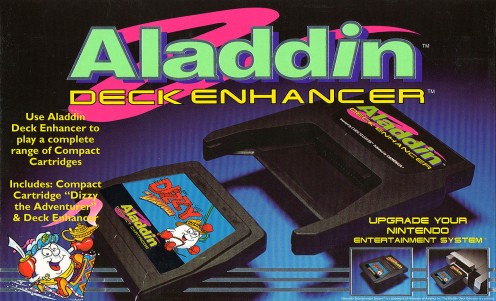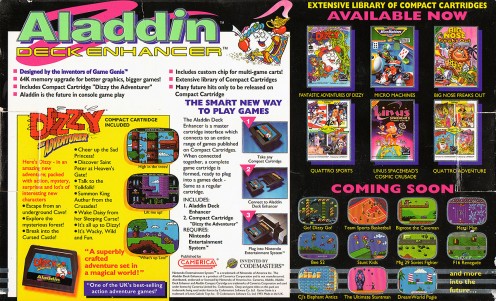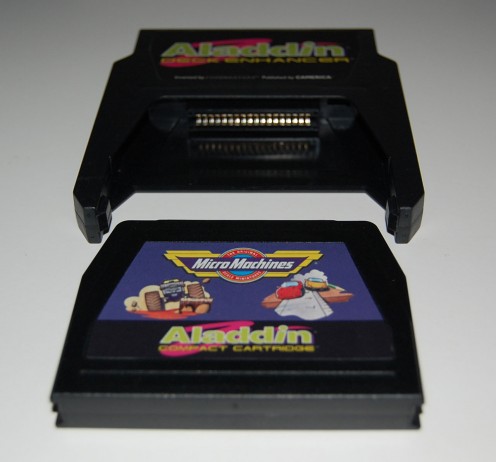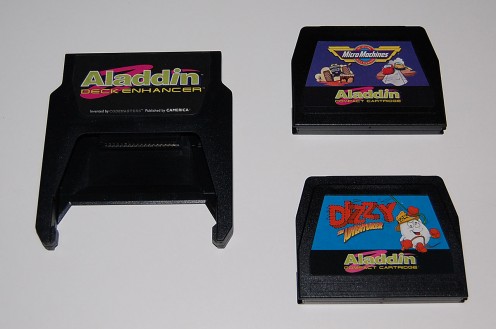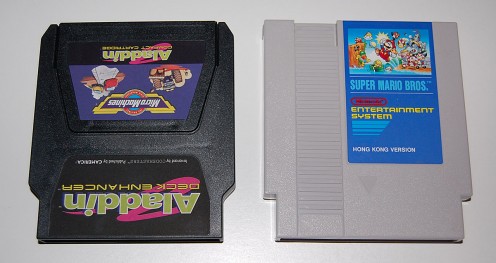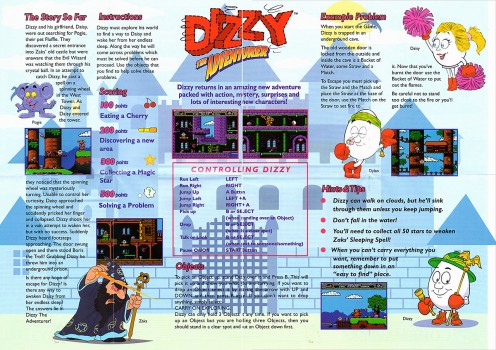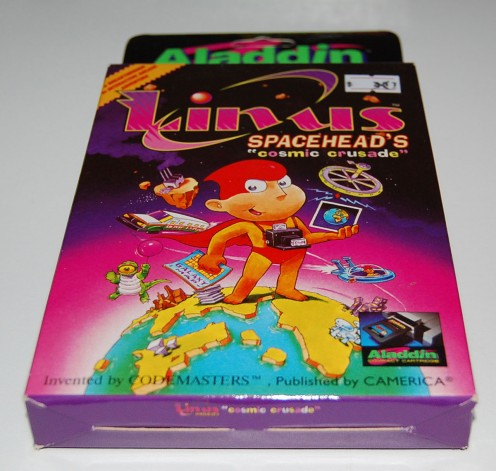The Aladdin™ Deck Enhancer™
by Rory
Welcome! Today’s post is about a lesser-known cartridge-based expansion system: the Aladdin Deck Enhancer developed by Codemasters and distributed in North America by Camerica Games. If you are familiar with the Game Genie then you will understand the basic premise of this device. You plug cartridges into one end and then put the whole works into your Nintendo. Turn the system on and BOOM: the game is now enhanced! Right? Not exactly, but just like the 32X it sounds good on paper.
The Aladdin uses specially designed (unlicensed) cartridges that only work when placed inside the device. Codemasters — reigning champions of the unlicensed games and accessories market — cleverly disguised a lockout chip in what they called a “deck enhancer”. To be fair the Aladdin base unit contains some other important components as well.
A typical NES cartridge that most of us are familiar with contains four parts: the memory control chip, the graphics chip, the 10NES lock-out chip, and the game ROM. In order to save money on production of their games Codemasters placed the first three components into a reusable cartridge. Rather than use an official 10NES chip the Aladdin relied on bypass circuitry. Now they could produce games and publish them on a single ROM chip. It is an interesting idea. Cartridges have always been very expensive to produce so a small operation like Codemasters would have greatly benefited from this type of setup.
The box states the Aladdin contains a 64K memory upgrade for “better graphics [and] bigger games!” I could not find any clear information on whether or not this is actually an upgrade as the matter seems to be up for debate on a few forums. I might be wrong but I’d like believe that any enhancement the unit provides is similar to other third-party Multi-Memory Controllers produced by companies like Konami. Does anyone have any details on this?
I actually own two Aladdins along with a complete set of the published games. Most of the games are still sealed but the boxes are a little bit worn. For being an unlicensed accessory Camerica really went all out on its North American production. The box is very attractive (by 90s standards) and the games I have played look and sound great. It’s as if they truly believed the Aladdin was the “future in console game play”. The instruction manual reads more like a sales ploy to developers than anything else.
This photo shows how the unit is assembled. The Micro Machines “compact” cartridge slides into the Aladdin before being placed into the NES. It is a really tight fit!
Here is a top-down view of the Aladdin and two of its compact cartridges.
As you can see, when a game is inserted, the Aladdin is basically the same size as any standard NES cartridge. On the right is my Hong Kong version of Super Mario Bros. It is technically no different than the US version of the game. Minus world still works.
I scanned the manual of the pack-in game “Dizzy the Adventurer” in case you would like to read it.
This is a photo of one of the Aladdin game boxes. I am not sure why the island on the lower left looks like a handgun.
All of the Aladdin games were later re-released as standalone games along with some of the titles listed as “coming soon” on the box. You might have seen Camerica’s warped and ugly gold cartridges in flea markets.
Extra info:
